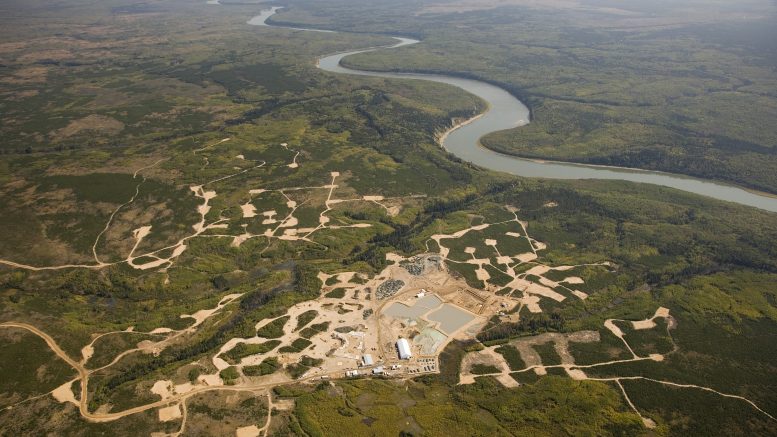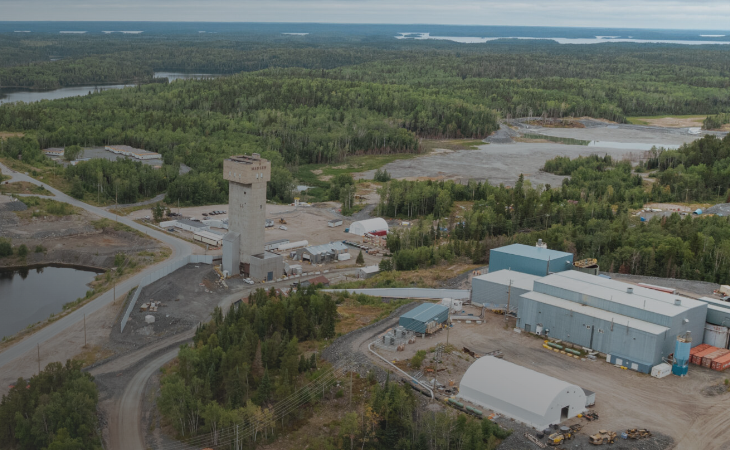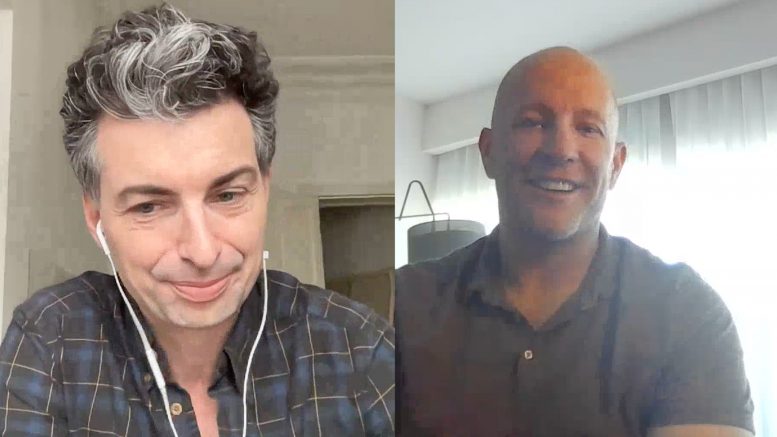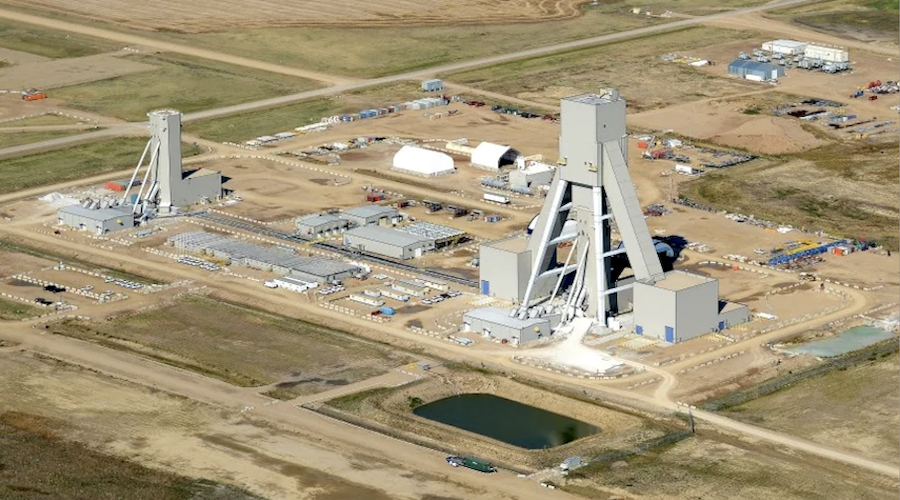As recently as 2012, mining giant
Rio Tinto had been publicly considering exiting the diamond space. But the company, which operates and owns 60% of the Diavik mine in the Northwest Territories, as well as the Argyle mine in Australia, was unable to find a buyer and announced in 2013 that it would retain its diamond business.
With Argyle slated to close in 2021 and Diavik in 2024, and the company deciding last August not to proceed with its Bunder project in India, Rio needs to replenish its diamond pipeline. New Rio Tinto CEO Jean-Sebastien Jacques, who was appointed last July, signalled soon after taking the reins that the company was ready and willing to invest.
“I would love to have more diamonds,” Jacques told the
Sydney Morning Herald last December. “That’s a priority area.” Now Rio has made its first move towards expanding its diamond pipeline by signing an agreement that could see it the majority owner at
Shore Gold’s (TSX: SGF) Star-Orion South diamond project in central Saskatchewan.
[caption id="attachment_1003720976" align="alignnone" width="509"]

The Star-Orion South diamond project, in Saskatchewan. Credit: Shore Gold[/caption]
The deal, which could see Rio earn up to 60% of the project for a total investment of $71.5 million, was announced in June. But George Read, Shore’s senior vice-president of exploration and development, says that Rio has had an eye on the project for a long time.
“In our initial large-diameter drilling sample, which took place in the early 2000s, it was noted that the diamond size frequency distribution was coarse,” Read said in an interview in early October. “That attracted Rio Tinto’s initial attention and there’s been a long dance, if we can call it that, between the companies that’s been on and off since then.”
Read adds that Rio participated openly in the initial valuation of Star-Orion South diamonds, which was published in early 2005, offering assistance in Antwerp.
At the same time as it announced the option with Rio, Shore reported that it had acquired Newmont Mining’s (NYSE: NEM) 31% stake in the project in return for 53.8 million common shares and 1.1 million warrants. Newmont now owns 19.9% of Shore`s undiluted stock.
Terms of the deal
While Rio has officially declared its interest in Star-Orion South, it doesn’t appear to be in a hurry to earn its potential 60% stake: the term of the four-phase deal extends over 7.5 years.
As part of the first phase of the deal, Rio will conduct $18.5 million in work at the project, or a 10-hole bulk-sampling program, within three years. It has also invested $1 million in Shore.
It won’t earn an interest in the project, however, until it completes the second phase — another $18.5-million in spending, or 10-hole bulk-sampling program over 18 months. At that point, Rio will earn 51% of Star-Orion South.
It can then earn another 5% by conducting $18.5 million worth of work or a bulk-sampling program within an 18-month period.
The last 5% interest will be transferred to Rio once it spends another $15 million or completes a feasibility study within 18 months.
Asked whether he was disappointed that the timeline for the deal was not more accelerated given the amount of work that has already been put into the project, Read admitted: “Yes, I think that is the simple answer! But I believe that Rio Tinto has every intention of achieving their goal as quickly as possible. I can’t speak for Rio Tinto, but certainly there is every intention to mobilize the (bulk-sampling) equipment and get the job done.”
Feasibility update
The main reason Star-Orion South has not yet been developed is its large price tag. According to a 2011 feasibility study, building an open-pit operation at the large but low-grade project, located 60 km east of Prince Albert, would cost $2.5 billion, with $1.9 billion of that cost coming before production.
Part of the high cost is due to the amount of overburden covering both kimberlites, averaging 92 metres deep at Star and 105 metres deep at Orion-South. But Read says the company is looking at different technology to reduce the cost of removing it.
Shore is considering the use of bucket wheel excavators to remove the layers of sand, clay and till. The 2011 feasibility had looked at removing the sand and clay by truck and shovel and the till layers with an in-pit crushing and conveying system.
Removing the 20-metre-deep layer of sand and clay at both kimberlites by truck and shovel was the most expensive part of the overburden removal. The company believes a bucket wheel excavator can remove all layers at a much lower cost (35-40¢ per tonne).
Shore is also looking at an improved processing plant design, with a revised flow sheet and the use of XRT recovery of diamonds to avoid breakage of the large stones Shore expects to recover.
Shore expects to see some large, high-value stones in future production — potentially stones above 100 carats.
“We recovered a 49-carat stone from Star and a 45-carat stone from Orion South in the evaluation that has already taken place,” Read says. “And the most valuable stone from Star is an 11.96-carat, Type IIa stone that is a real gin and tonic white.”
Type IIa stones are rare, nitrogen free, highly valued diamonds.
Work is under way on a feasibility update incorporating the changes to the plant and overburden removal.
“Previously with the 2011 feasibility study, we had a $1.9-billion preproduction capital cost that was considered somewhat unpalatable by a number of investors. That number we believe can be brought down significantly through these two approaches with the overburden and with the plant.”
The study will use a 2015 resource update that increased indicated resources at Star by 38% and at Orion South by 134%. (Indicated resources for both kimberlites total 55.4 million carats in 393 million tonnes grading 14 carats per hundred tonnes.)
While Read says he can’t say when the feasibility will be completed, he notes that the bulk of the work towards it has already been completed. “We have some detailed engineering work that remains to be done that can be completed quite quickly, and we are busy with that.”
Shore Diamond
In the meantime, in September, Shore shareholders approved a proposed name change to Shore Diamond Corp. — a move that Read says is appropriate now that a potential path to diamond production has opened up with the Rio deal.
Also at the annual general meeting, a faction of dissident Shore shareholders representing about 10% of the company’s shares, failed to unseat some of the company’s directors. The shareholders, who want to see some of their own nominees appointed to the board, had also tried to unseat several directors at the 2016 AGM.
On the permitting side, Shore is still waiting for provincial approval of its environmental impact statement (EIS), which was approved by the federal government in 2014. The province committed $137,000 to First Nations consultations early this year as part of its duty to consult after it identified issues that hadn’t previously been addressed in a public review process.
“There is no information that we’re required to provide them with at this stage,” Read says. “There was work that they were doing on duty to consult with local communities. We understand that if that work has not already been completed, it’s very close to being completed.”
–This story originally appeared in the November 2017 issue of Diamonds in Canada. 
 The Star-Orion South diamond project, in Saskatchewan. Credit: Shore Gold[/caption]
The deal, which could see Rio earn up to 60% of the project for a total investment of $71.5 million, was announced in June. But George Read, Shore’s senior vice-president of exploration and development, says that Rio has had an eye on the project for a long time.
“In our initial large-diameter drilling sample, which took place in the early 2000s, it was noted that the diamond size frequency distribution was coarse,” Read said in an interview in early October. “That attracted Rio Tinto’s initial attention and there’s been a long dance, if we can call it that, between the companies that’s been on and off since then.”
Read adds that Rio participated openly in the initial valuation of Star-Orion South diamonds, which was published in early 2005, offering assistance in Antwerp.
At the same time as it announced the option with Rio, Shore reported that it had acquired Newmont Mining’s (NYSE: NEM) 31% stake in the project in return for 53.8 million common shares and 1.1 million warrants. Newmont now owns 19.9% of Shore`s undiluted stock.
Terms of the deal
While Rio has officially declared its interest in Star-Orion South, it doesn’t appear to be in a hurry to earn its potential 60% stake: the term of the four-phase deal extends over 7.5 years.
As part of the first phase of the deal, Rio will conduct $18.5 million in work at the project, or a 10-hole bulk-sampling program, within three years. It has also invested $1 million in Shore.
It won’t earn an interest in the project, however, until it completes the second phase — another $18.5-million in spending, or 10-hole bulk-sampling program over 18 months. At that point, Rio will earn 51% of Star-Orion South.
It can then earn another 5% by conducting $18.5 million worth of work or a bulk-sampling program within an 18-month period.
The last 5% interest will be transferred to Rio once it spends another $15 million or completes a feasibility study within 18 months.
Asked whether he was disappointed that the timeline for the deal was not more accelerated given the amount of work that has already been put into the project, Read admitted: “Yes, I think that is the simple answer! But I believe that Rio Tinto has every intention of achieving their goal as quickly as possible. I can’t speak for Rio Tinto, but certainly there is every intention to mobilize the (bulk-sampling) equipment and get the job done.”
Feasibility update
The main reason Star-Orion South has not yet been developed is its large price tag. According to a 2011 feasibility study, building an open-pit operation at the large but low-grade project, located 60 km east of Prince Albert, would cost $2.5 billion, with $1.9 billion of that cost coming before production.
Part of the high cost is due to the amount of overburden covering both kimberlites, averaging 92 metres deep at Star and 105 metres deep at Orion-South. But Read says the company is looking at different technology to reduce the cost of removing it.
Shore is considering the use of bucket wheel excavators to remove the layers of sand, clay and till. The 2011 feasibility had looked at removing the sand and clay by truck and shovel and the till layers with an in-pit crushing and conveying system.
Removing the 20-metre-deep layer of sand and clay at both kimberlites by truck and shovel was the most expensive part of the overburden removal. The company believes a bucket wheel excavator can remove all layers at a much lower cost (35-40¢ per tonne).
Shore is also looking at an improved processing plant design, with a revised flow sheet and the use of XRT recovery of diamonds to avoid breakage of the large stones Shore expects to recover.
Shore expects to see some large, high-value stones in future production — potentially stones above 100 carats.
“We recovered a 49-carat stone from Star and a 45-carat stone from Orion South in the evaluation that has already taken place,” Read says. “And the most valuable stone from Star is an 11.96-carat, Type IIa stone that is a real gin and tonic white.”
Type IIa stones are rare, nitrogen free, highly valued diamonds.
Work is under way on a feasibility update incorporating the changes to the plant and overburden removal.
“Previously with the 2011 feasibility study, we had a $1.9-billion preproduction capital cost that was considered somewhat unpalatable by a number of investors. That number we believe can be brought down significantly through these two approaches with the overburden and with the plant.”
The study will use a 2015 resource update that increased indicated resources at Star by 38% and at Orion South by 134%. (Indicated resources for both kimberlites total 55.4 million carats in 393 million tonnes grading 14 carats per hundred tonnes.)
While Read says he can’t say when the feasibility will be completed, he notes that the bulk of the work towards it has already been completed. “We have some detailed engineering work that remains to be done that can be completed quite quickly, and we are busy with that.”
Shore Diamond
In the meantime, in September, Shore shareholders approved a proposed name change to Shore Diamond Corp. — a move that Read says is appropriate now that a potential path to diamond production has opened up with the Rio deal.
Also at the annual general meeting, a faction of dissident Shore shareholders representing about 10% of the company’s shares, failed to unseat some of the company’s directors. The shareholders, who want to see some of their own nominees appointed to the board, had also tried to unseat several directors at the 2016 AGM.
On the permitting side, Shore is still waiting for provincial approval of its environmental impact statement (EIS), which was approved by the federal government in 2014. The province committed $137,000 to First Nations consultations early this year as part of its duty to consult after it identified issues that hadn’t previously been addressed in a public review process.
“There is no information that we’re required to provide them with at this stage,” Read says. “There was work that they were doing on duty to consult with local communities. We understand that if that work has not already been completed, it’s very close to being completed.”
–This story originally appeared in the November 2017 issue of Diamonds in Canada.
The Star-Orion South diamond project, in Saskatchewan. Credit: Shore Gold[/caption]
The deal, which could see Rio earn up to 60% of the project for a total investment of $71.5 million, was announced in June. But George Read, Shore’s senior vice-president of exploration and development, says that Rio has had an eye on the project for a long time.
“In our initial large-diameter drilling sample, which took place in the early 2000s, it was noted that the diamond size frequency distribution was coarse,” Read said in an interview in early October. “That attracted Rio Tinto’s initial attention and there’s been a long dance, if we can call it that, between the companies that’s been on and off since then.”
Read adds that Rio participated openly in the initial valuation of Star-Orion South diamonds, which was published in early 2005, offering assistance in Antwerp.
At the same time as it announced the option with Rio, Shore reported that it had acquired Newmont Mining’s (NYSE: NEM) 31% stake in the project in return for 53.8 million common shares and 1.1 million warrants. Newmont now owns 19.9% of Shore`s undiluted stock.
Terms of the deal
While Rio has officially declared its interest in Star-Orion South, it doesn’t appear to be in a hurry to earn its potential 60% stake: the term of the four-phase deal extends over 7.5 years.
As part of the first phase of the deal, Rio will conduct $18.5 million in work at the project, or a 10-hole bulk-sampling program, within three years. It has also invested $1 million in Shore.
It won’t earn an interest in the project, however, until it completes the second phase — another $18.5-million in spending, or 10-hole bulk-sampling program over 18 months. At that point, Rio will earn 51% of Star-Orion South.
It can then earn another 5% by conducting $18.5 million worth of work or a bulk-sampling program within an 18-month period.
The last 5% interest will be transferred to Rio once it spends another $15 million or completes a feasibility study within 18 months.
Asked whether he was disappointed that the timeline for the deal was not more accelerated given the amount of work that has already been put into the project, Read admitted: “Yes, I think that is the simple answer! But I believe that Rio Tinto has every intention of achieving their goal as quickly as possible. I can’t speak for Rio Tinto, but certainly there is every intention to mobilize the (bulk-sampling) equipment and get the job done.”
Feasibility update
The main reason Star-Orion South has not yet been developed is its large price tag. According to a 2011 feasibility study, building an open-pit operation at the large but low-grade project, located 60 km east of Prince Albert, would cost $2.5 billion, with $1.9 billion of that cost coming before production.
Part of the high cost is due to the amount of overburden covering both kimberlites, averaging 92 metres deep at Star and 105 metres deep at Orion-South. But Read says the company is looking at different technology to reduce the cost of removing it.
Shore is considering the use of bucket wheel excavators to remove the layers of sand, clay and till. The 2011 feasibility had looked at removing the sand and clay by truck and shovel and the till layers with an in-pit crushing and conveying system.
Removing the 20-metre-deep layer of sand and clay at both kimberlites by truck and shovel was the most expensive part of the overburden removal. The company believes a bucket wheel excavator can remove all layers at a much lower cost (35-40¢ per tonne).
Shore is also looking at an improved processing plant design, with a revised flow sheet and the use of XRT recovery of diamonds to avoid breakage of the large stones Shore expects to recover.
Shore expects to see some large, high-value stones in future production — potentially stones above 100 carats.
“We recovered a 49-carat stone from Star and a 45-carat stone from Orion South in the evaluation that has already taken place,” Read says. “And the most valuable stone from Star is an 11.96-carat, Type IIa stone that is a real gin and tonic white.”
Type IIa stones are rare, nitrogen free, highly valued diamonds.
Work is under way on a feasibility update incorporating the changes to the plant and overburden removal.
“Previously with the 2011 feasibility study, we had a $1.9-billion preproduction capital cost that was considered somewhat unpalatable by a number of investors. That number we believe can be brought down significantly through these two approaches with the overburden and with the plant.”
The study will use a 2015 resource update that increased indicated resources at Star by 38% and at Orion South by 134%. (Indicated resources for both kimberlites total 55.4 million carats in 393 million tonnes grading 14 carats per hundred tonnes.)
While Read says he can’t say when the feasibility will be completed, he notes that the bulk of the work towards it has already been completed. “We have some detailed engineering work that remains to be done that can be completed quite quickly, and we are busy with that.”
Shore Diamond
In the meantime, in September, Shore shareholders approved a proposed name change to Shore Diamond Corp. — a move that Read says is appropriate now that a potential path to diamond production has opened up with the Rio deal.
Also at the annual general meeting, a faction of dissident Shore shareholders representing about 10% of the company’s shares, failed to unseat some of the company’s directors. The shareholders, who want to see some of their own nominees appointed to the board, had also tried to unseat several directors at the 2016 AGM.
On the permitting side, Shore is still waiting for provincial approval of its environmental impact statement (EIS), which was approved by the federal government in 2014. The province committed $137,000 to First Nations consultations early this year as part of its duty to consult after it identified issues that hadn’t previously been addressed in a public review process.
“There is no information that we’re required to provide them with at this stage,” Read says. “There was work that they were doing on duty to consult with local communities. We understand that if that work has not already been completed, it’s very close to being completed.”
–This story originally appeared in the November 2017 issue of Diamonds in Canada. 




Comments